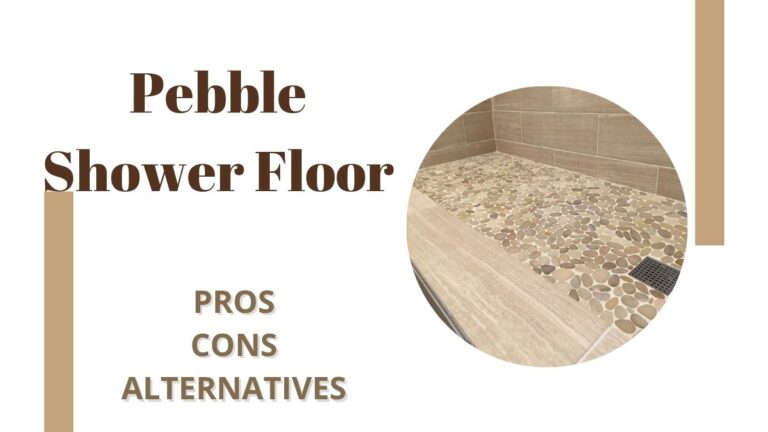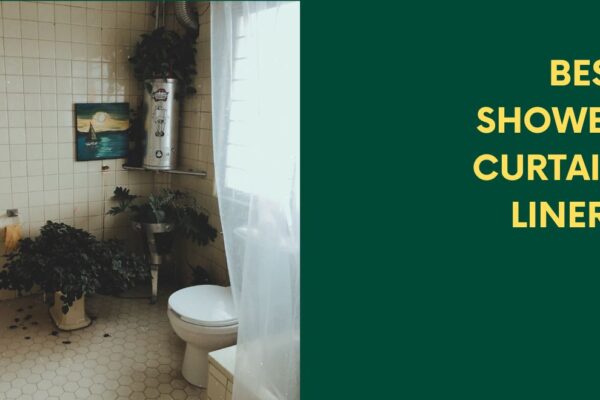We’ll walk you through the features, benefits, and drawbacks of a pebble shower floor in detail.
An attractive and reasonably priced bathroom remodeling option is a pebble shower floor, also referred to as a river rock floor. Some people have gone to nearby rivers to gather stones, which has allowed them to significantly reduce their material costs.
It will depend on a variety of factors, and each material has pros and cons, whether a pebble shower floor is the best option for your bathroom.
To assist you in determining whether river rock flooring is a practical option for your upcoming bathroom renovation, this article will discuss the benefits, drawbacks, and alternatives of pebble shower flooring.
6 Pros of the Pebble Shower Floor
Let’s look at the benefits of this style of shower flooring now that you are familiar with it.
Easy to Install
The key to installing pebblestones is to arrange the stones according to your preferences before applying a sealant or coat. You can do this easy DIY project either inside or outside of the shower.
Even though the procedure is straightforward, laying the pebble stones does require patience, and you will need more than a few stones to fit your bathroom floor.
However, putting in the flooring is simple and enjoyable.
Slip Resistant
When wet, pebble flooring is not slick and is secure for walking. In the shower, where many slip-and-fall accidents can happen, this slip resistance is crucial. You can shower safely and without slipping thanks to the river rock flooring.
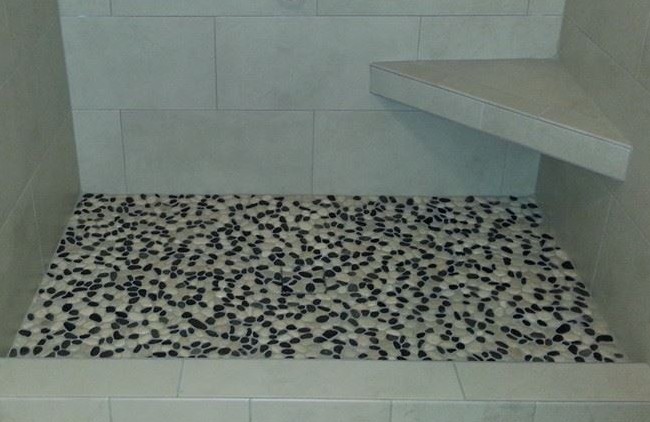
Comfortable on Your Feet
For the majority of people, pebble or river rock flooring is known to have a soothing, massage-like texture that can be quite relaxing on your feet. To ensure that the river rock is comfortable, make sure it is smooth and rounded.
Amazing Unique Finish
Comparing pebble flooring to the majority of acrylic and tile flooring, it has a superior appearance and finishes. To create a one-of-a-kind appearance, you can also combine any number of special pebbles.
Are of a Wide Variety
With pebbles, you have a variety of options for size, color, patterns for laying them out, spacing, and other factors. You can decide whether to have a single color or a variety of colors.
The Bali Pebble tiles, which can also be divided into Orion, Redwood, Tahiti, Forrest, Jubilee, Yellow Jelly, and many other varieties, are among the more popular pebble tiles. You can mix and match the pebbles however you like because there is an endless variety available.
Regarding the cost of materials and the time required to construct these floors, there aren’t any noticeable differences among any of these options.
Affordable
One of the least expensive shower flooring options is to install pebble stones. Even with the purchase of the stones, the store-bought pebbles, and additional installation-related materials, the overall cost is reasonable compared to other options.
To get started, all you need are a few working tools, pebble stones, sealant, grout, and thin-set. In contrast to tiling solutions, you also need a tile cutter, numerous tiles, and fresh grout. In terms of price, pebble stones are a better choice.
You Might Also Like:
9 Cons of the Pebble Shower Floor
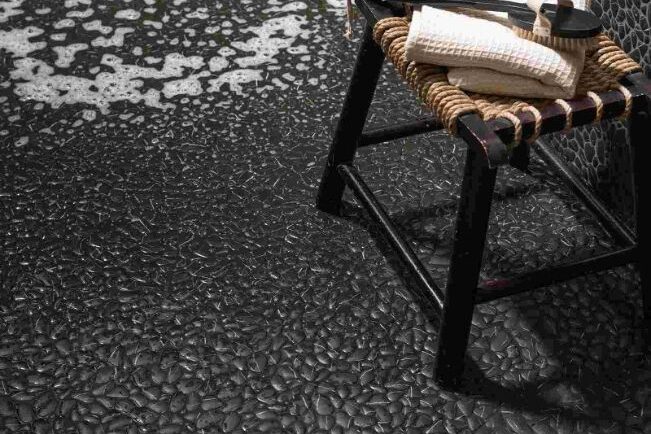
The downsides to having a pebble shower floor are as follows:
High Maintenance
Shower floors made of pebbles require more effort to clean than those made of tiles. To prevent the floor from being damaged, you will need to clean everything very carefully.
If you exert yourself excessively, the grout will start to come off and you will need to apply a new coat. For longevity, it is best to dry-mop the floor after each shower.
It Does Not Last Long
A pebble shower floor does not last as long as other types of shower floors.
The sealer and the grout cannot be compared to, say, tiles even when the shower floor is meticulously cleaned. Due to the need for frequent repairs, the cost of the floor will ultimately rise as a result.
Use Lots of Grout
When installing pebble floors, you use a lot more grout in comparison to tiles and other bathroom flooring options. Since grout is used to fill the space between two tiles, more grout will be required to fill the space between thousands of tiny pebbles.
On average, you need 2.5 times more grout to install a pebble floor than a mosaic shower floor of a similar size. However, using larger pebbles can help to partially resolve this issue.
Mold Risk
Mold growth is a possibility with any type of shower flooring. The risk is slightly higher with pebble flooring than with most other types, though. The extra grout and the increased maintenance requirements are two reasons for this. Mold may grow on your flooring if you neglect to properly maintain your grout or reseal your floor.
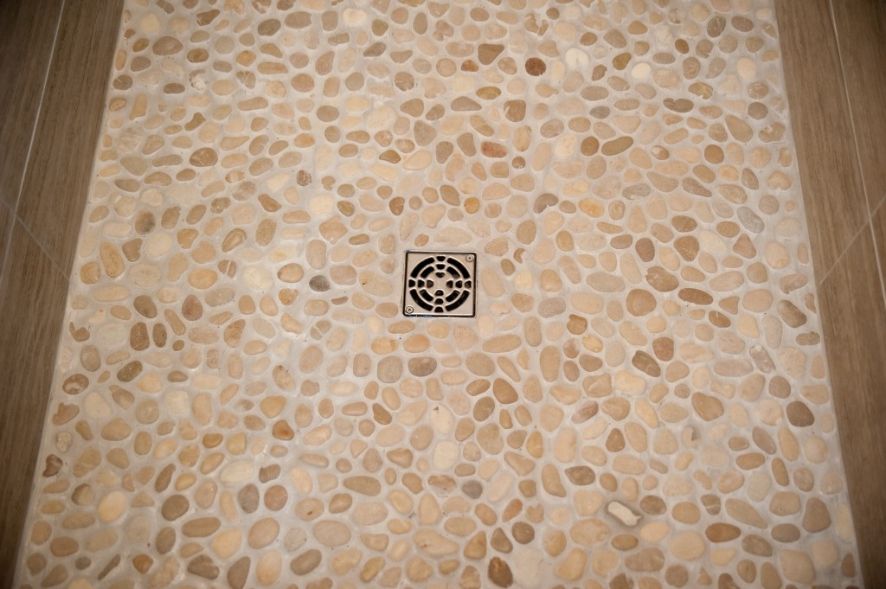
Finishing Finesse
Installation is as simple as a straightforward do-it-yourself project, as we’ve already established. They occasionally can be challenging, though.
Without the right instructions, you might end up with a bathroom floor that is uneven, has too much grout, cracks, and looks bad. Therefore, if you want the perfect finish, you usually need a specialist.
In order to accurately measure the installation area, calculate the materials you’ll need, and finally, lay the sealant for you, you should get an expert opinion.
By doing this, you’ll prevent the floor from rotting as a result of water seeping through the cracks. You don’t want to deal with issues like these.
Can Be Slippery If Textured Poorly
It’s best to have pebble shower floors that are a little rough, with little space between the pebbles. You lose the unevenness if you pack them too closely or if you apply a layer of grout and sealant that is too thick.
Since you’ll essentially be walking on a layer of the sealer, which can become slick when wet, they become slippery when there is too much of it applied.
Can Be Uncomfortable on Bare Feet
Although the corrugated nature of the pebble floors adds comfort and a massage feeling to the feet, it’s best enjoyed with some type of footwear. You risk having your feet injured if not. It can be uncomfortable to walk on pebble tiles because of their sharp edges.
It Holds Water
The water from the shower will simply sit on the floor for as long as it can if your bathroom doesn’t have a slope. It won’t drain, which results in wet grout that eventually turns into mildew.
You name it: black, brown, pink, etc. The only way to avoid this is to clean and dry the floor frequently, which leads to disadvantage number one—expensive maintenance.
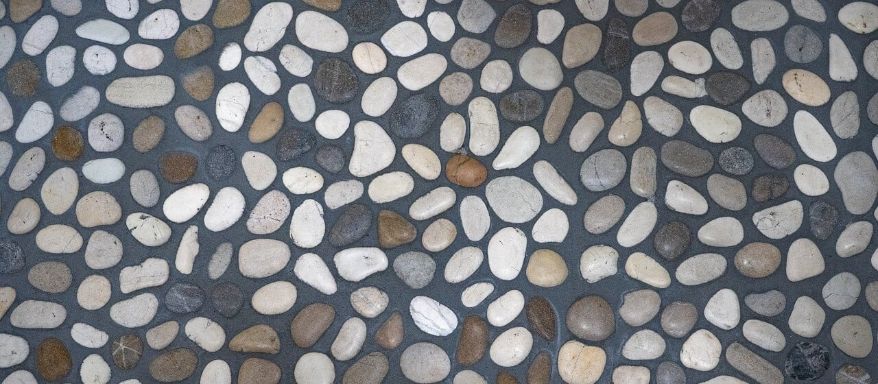
Not Suited to Hard Water
If you reside in a region with hard water, you will need to follow strict cleaning and maintenance procedures to keep your bathroom’s pebble floor looking nice. This is due to the fact that if hard water is not removed, pebbles will develop a thin, chalky film on their surface.
The pebble floor needs to be cleaned and dried after each shower for this reason.
What is a Pebble Shower Floor?
It’s a type of stone that is held together by epoxy resins and gives the interior of your home a natural aesthetic appearance. One of the many floor material options currently on the market is pebblestone shower flooring.
Pebble stone flooring is often less expensive than tile flooring and has easier installation. You won’t have to deal with marble and porcelain flaws or other cracks because this exceptional flooring structure is very resistant.
In addition to providing traction and a stronger grip, the stone pebbles frequently support and massage the feet. Your bathroom can benefit greatly from improvements with pebblestone shower floors.
How to Install a Pebble Shower Floor?
The steps listed below can be used to install this floor. Verify the waterproofing, gradient, and general dependability of the subfloor before moving forward.
Compared to other shower floor types, this floor requires a steeper gradient.
- Using a trowel, apply a thin-set coating to the bathroom floor that is no thicker than 1/8 of an inch. Then, install the pebble tiles on top of the thin-set layer. Check the tiles’ interlocking from the edge inward.
- Then, wait at least 24 hours for the thin-set to dry on the floor before filling in the spaces that the pebbles left behind.
- To completely encase the pebbles, apply a fair amount of sealant. The color of the grout won’t be absorbed by the stones thanks to this sealer. Await the sealant to dry.
- To cover the pebbles, spread the grout on top of them after thoroughly mixing it. Make sure the stones are completely and evenly covered in grout.
- After 20 minutes, remove any extra grout from the floor using a wet sponge. Before the subsequent wiping session, repeat this process with a clean sponge.
- After 24 hours, finish the look by adding the final coat of sealer, then wait for it to dry.
Then you can dive in for a shower. If properly installed, this pebble shower floor will last a very long time.
Alternatives to Pebble Shower Flooring
If you don’t like the pebble shower floor, here are some alternatives for you:
Porcelain Pebble Tile
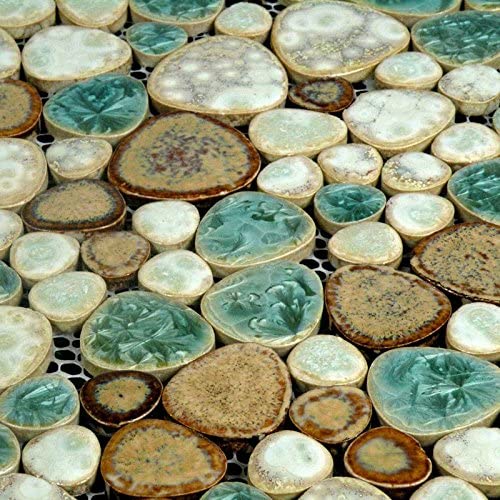
Despite being made of porcelain, porcelain pebble tiles resemble stone pebbles in appearance. Without any drawbacks, like the need to reseal every six to twelve months, these tiles give the appearance of stone pebbles. Instead, porcelain tiles need to be resealed every three to four years.
However, porcelain pebble flooring typically costs more than natural stone pebble flooring, and grout problems still exist.
Mosaic Tiles
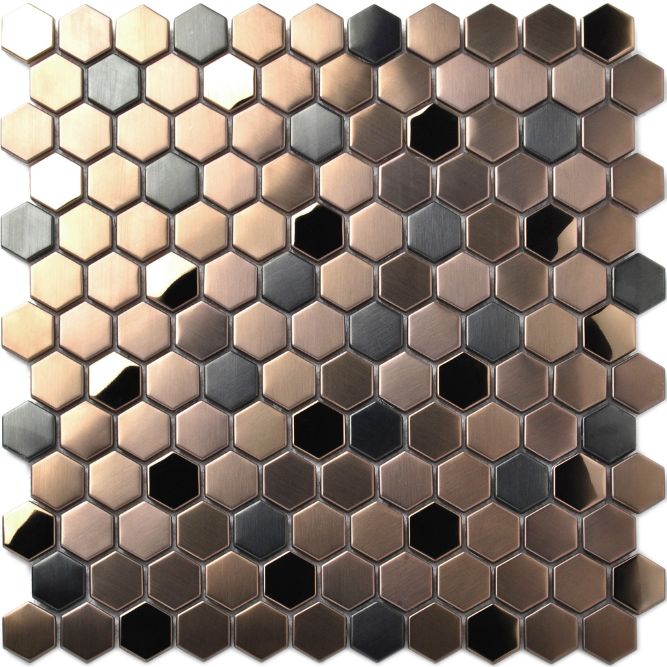
The same distinctive styling found in river rock flooring is also available in mosaic tiling. Some might contend that stone pebble flooring lacks the refined beauty of mosaic-tiled floors.
In terms of installation and cost, mosaic tiles are comparable to river rock. They are superior to river rock flooring because, like porcelain tile, they only need to be resealed every few years.
Penny Tile
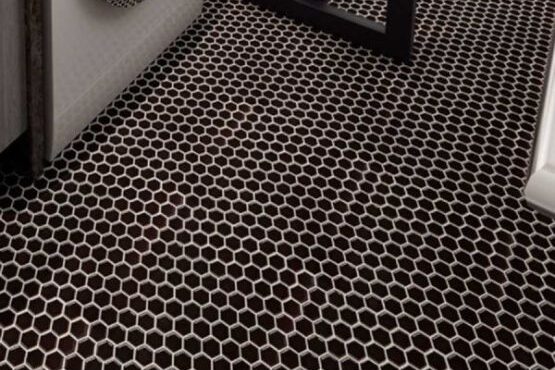
Round tiles known as penny tiles can be made of glass, porcelain, or ceramic. Although penny tiles don’t exactly resemble pebble flooring due to their uniform size, they come close.
They have an advantage over river rocks because they are made of different materials and don’t need to be resealed every year. Although I’m not sure how well coins would work as shower flooring, some DIY purists have used actual coins as penny tile.
Be Careful When Using a Pebble Shower Floor
The popularity of pebble shower flooring is growing among homeowners. It competes fiercely with marble flooring and tiles thanks to its artistic installation, appealing appearance, and spa-like atmosphere. It does have benefits and drawbacks, though.
It looks fantastic in hobo shower designs and modern-contemporary shower designs. Its benefits include simple installation, slip resistance, color mixing capability, and natural appearance. It is difficult to maintain, has a short lifespan, and consumes a lot of grout.
Keep in mind that you might need to fix it occasionally to stop any issues from getting worse. Do not be reluctant to fix any loose stones or other parts of the floor if you notice them.
FAQs
How Often Reseal the Pebble Shower Floor?
Pebble shower floors should be resealed every six to twelve months. While old tile work should be resealed once a year, new tile work should be resealed every six months. When you notice any loose pieces of grout on the shower floor, keep an eye on the nature of the tiles and reseal them.
Is the Pebble Tile Good for Shower Floor?
Shower floors shouldn’t use pebble tiles. Pebble tiles, in contrast to regular pebbles, are challenging to install because their uneven shapes don’t completely interlock. As a result, installing and maintaining them is quite challenging. Pebble tile floors, however, can become some of the best with proper installation and upkeep.
Is It Hard to Clean the Pebble Shower Floor?
Spray the resulting mixture onto your pebble tile floor by combining 1 part white vinegar with 16 parts water. Circularly scrub the floor with a nylon-bristle scrub brush, then rinse with warm water. Cleaning pebble shower floors is simple, especially if they were installed correctly and the grout and sealant were applied correctly.
Do You Need to Seal the Pebble Shower Floor?
Yes, the sealant is necessary to make pebble shower flooring waterproof during installation. Depending on how frequently your shower is used, your floor will then require a reseal every six months to a year.

